|


256-bit encryption
$500,000 protection

|
NATCHEZ
steamboat
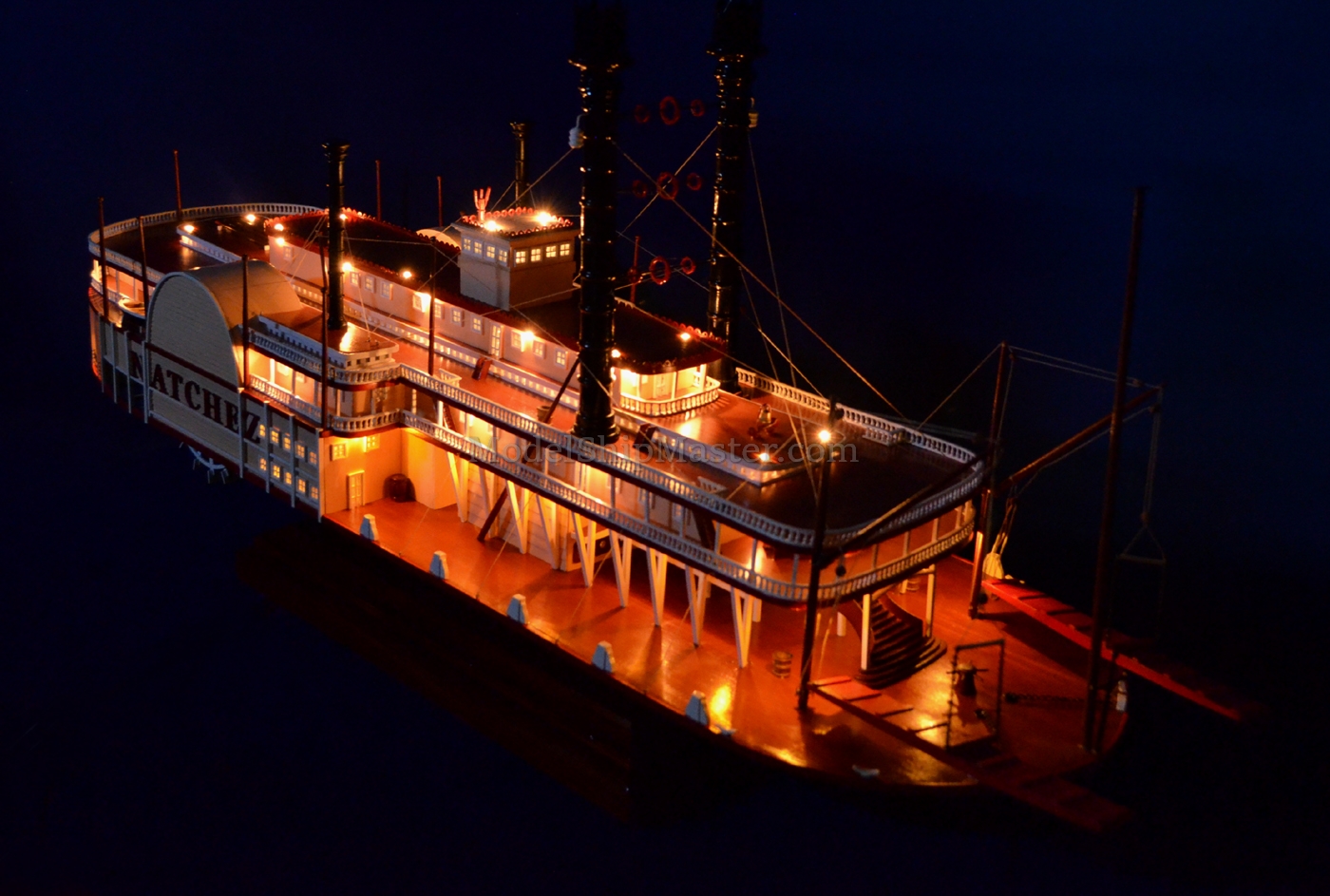
The Natchez was a
steamboat built in
1869 in Cincinnati. She was 301 feet long, had eight
boilers and a capacity of 5,500 cotton bales. In her
9 1⁄2-year service, she made 401 trips without a single
deadly accident. Natchez became famous as the
participant against another Mississippi paddle steamer,
the Robert E. Lee, in a race from New Orleans to St.
Louis in June 1870, immortalized in a lithograph
by Currier and Ives. The Natchez steamboat had beaten the previous
speed record, that of the J. M. White in 1844. Stripped
down, carrying no cargo, steaming on through fog and
making only one stop, the Robert E. Lee won the race in
3 days, 18 hours and 14 minutes. By contrast,
the steamboat Natchez carried her normal load and stopped as
normal, tying up overnight when fog was encountered.
Despite this she berthed only six hours later.
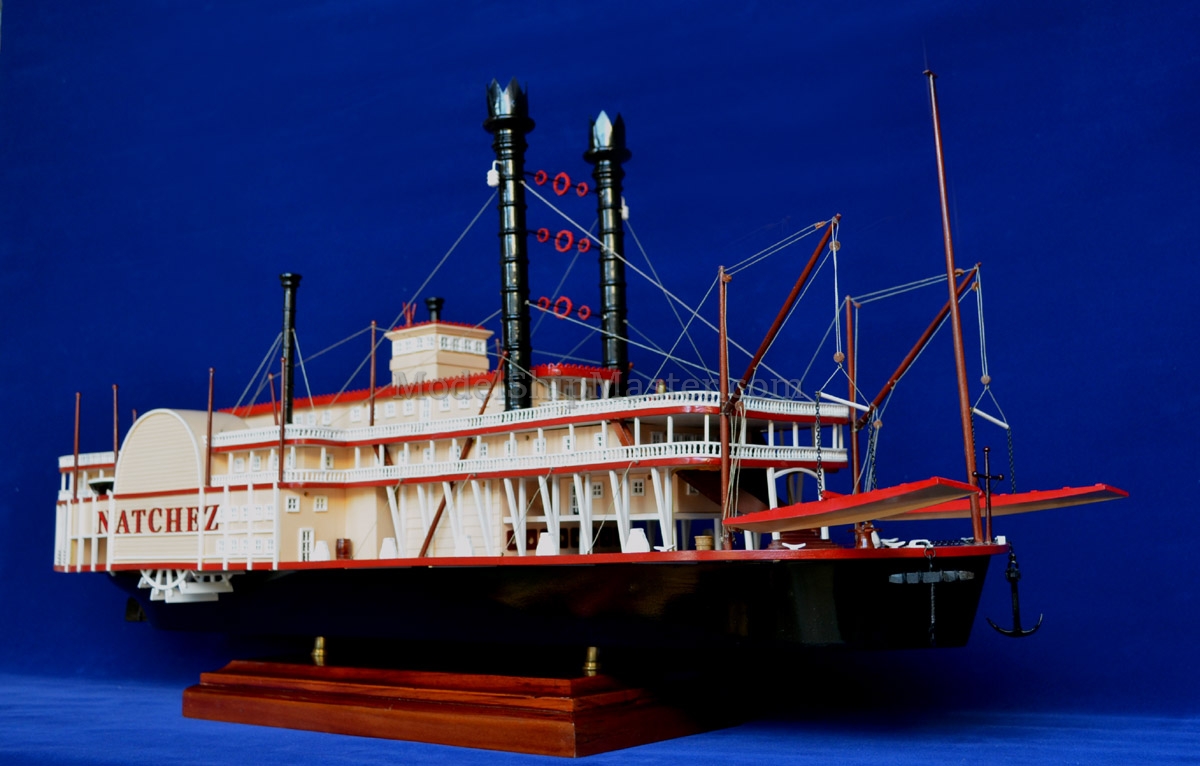
New
Orleans, Louisiana, July 1, 1870: Both steamboats—the
Robert E. Lee and the Natchez—promote themselves as “the
fastest steamboat on America’s rivers.” At 5:00,
the
starting pistol shot rang out. Silence vanished. Boat
whistles blew. The paddle wheels churned. Passengers on
both boats cheered and clapped. Thousands of spectators
lining the banks of the Mississippi began whooping,
shouting, dancing, and jumping. The noise of excitement
crushed normal conversation, as the race of the century
was on.
Over the next few days,
thousands of more spectators showed up in
every river port and thousands more on levees between
those ports, both night and day, as the steamboat Natchez and the
Robert E. Lee sped their way along the 1200 miles of
the twisting, treacherous Mississippi River from New
Orleans to St. Louis.
Newspapers across the
United States and all across Europe had been
promoting this race for at least six months. It was the
most anticipated race in history. Citizens on both sides
of the Atlantic Ocean were placing bets on the race
at unprecedented levels. Some were speculating that $2 to
$3 million dollars were bet on this race (using relative
share of Gross Domestic Product that is $3.7 billion
today).
Part of this gambling
frenzy had to do with the well
known rivalry and intense personal animosity between
each of the boat’s captains—John W. Cannon of the Lee
and Thomas P. Leathers of the steamboat Natchez. They cursed
each other and made fun of one another in public and
private for years.
But, the
race was not merely about sport, gambling, and “getting
even”. It’s also about testing and improving boats. The
speed of a steamboat was an important asset in making
money. Customers wanted a
fast boat. Passengers wanted to arrive at their
destinations quicker. Therefore, all boat owners were
doing everything possible to improve the speed of their steamboats.
So, even though this race
was exceptional, steamboat races were
frequent occurrences on the Mississippi, the Missouri,
and the Ohio Rivers. All too often, though, they ended in
disaster because boat boilers were pushed to the point of
exploding. The Forest Rose blew up when it was racing
the York Town back in 1857 on the Ohio. Two killed and
dozens injured. Earlier that same year, the Ben Sherrod
steamboat was racing the Prairie on the Mississippi,
just below Natchez. A boiler blew on the Sherrod and the
resulting fire killed 150 people. There had been many
more such disasters on our rivers over the past 60 years
of steamboat travel.
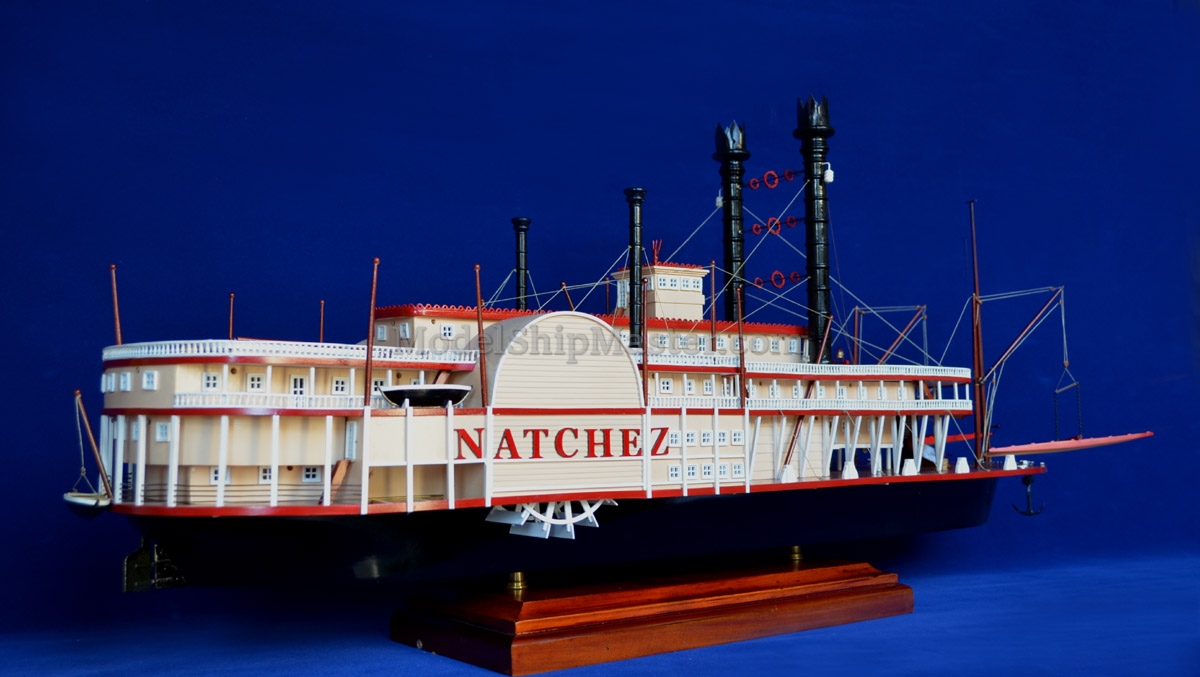
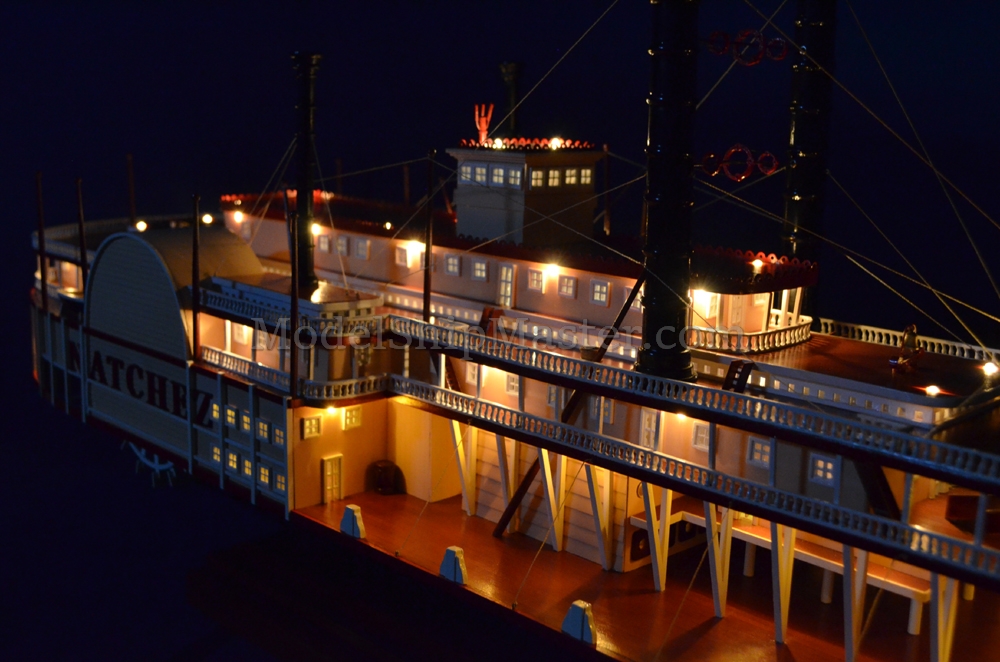
This primarily wood Natchez
steamboat model is 38"L x 11"W x 17" T $3,475
Shipping and insurance in
the contiguous USA included.
Other places: $400 flat rate. Lighting feature is included.
A boat without beautiful lighting is not a
riverboat. LED light powered by standard 9v battery for
your convenience.
Model is built per commission only. We require only a
small deposit to start the process. The
remaining balance won't be due until the model is
completed. Please click here for
lead time.
ModelShipMaster.com builds model ships of all types. We are unrivaled in whatever we do.
To commission
your favorite
vessel, just
click
here to
let us know of your preferences.
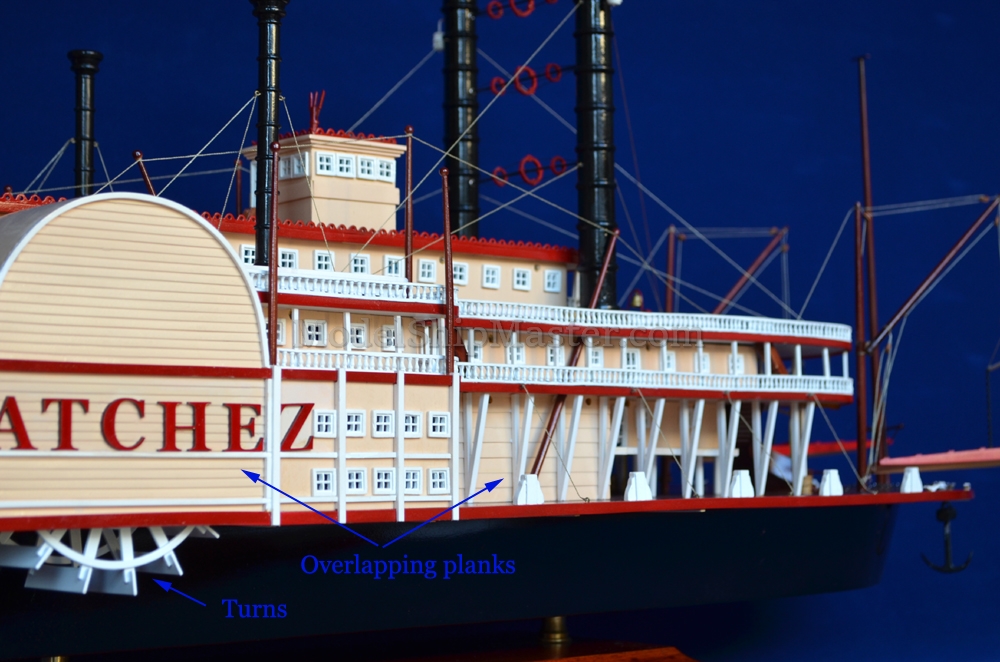
Learn more about the Natchez
here:
https://en.wikipedia.org/wiki/Natchez_(boat)
|